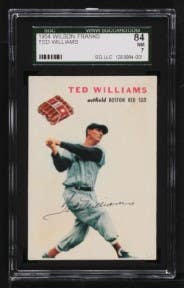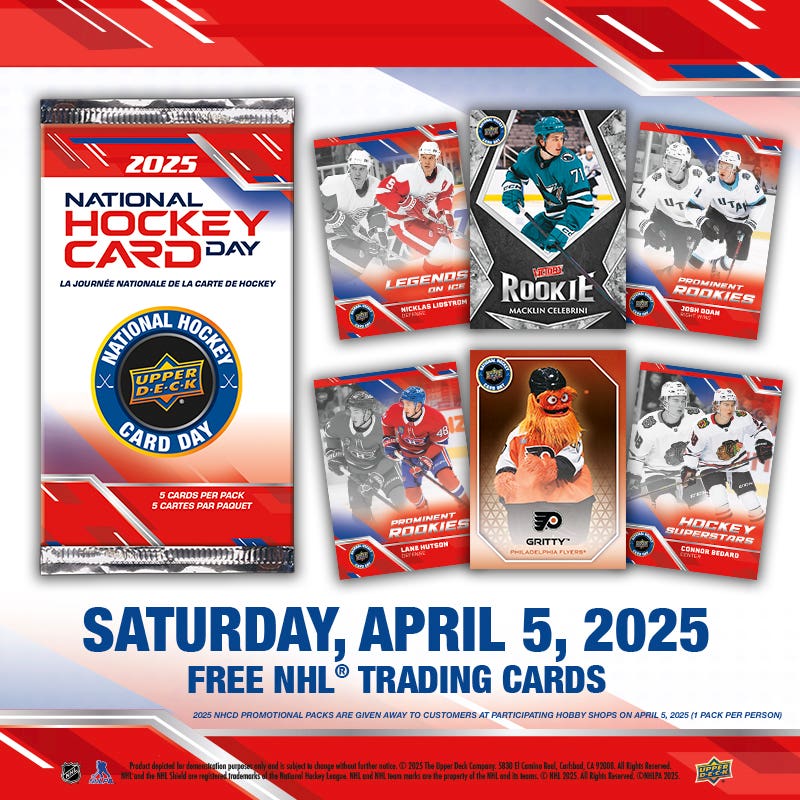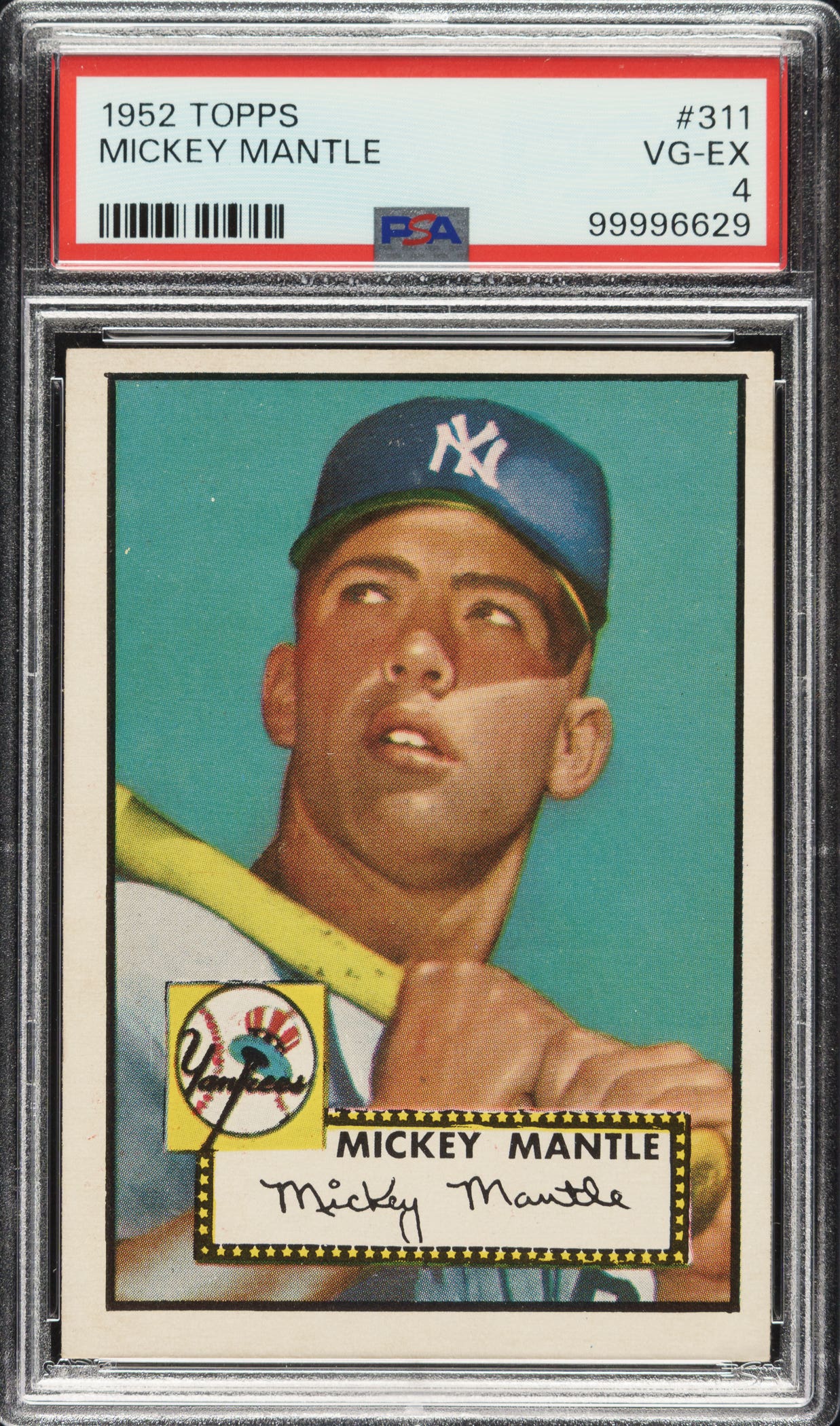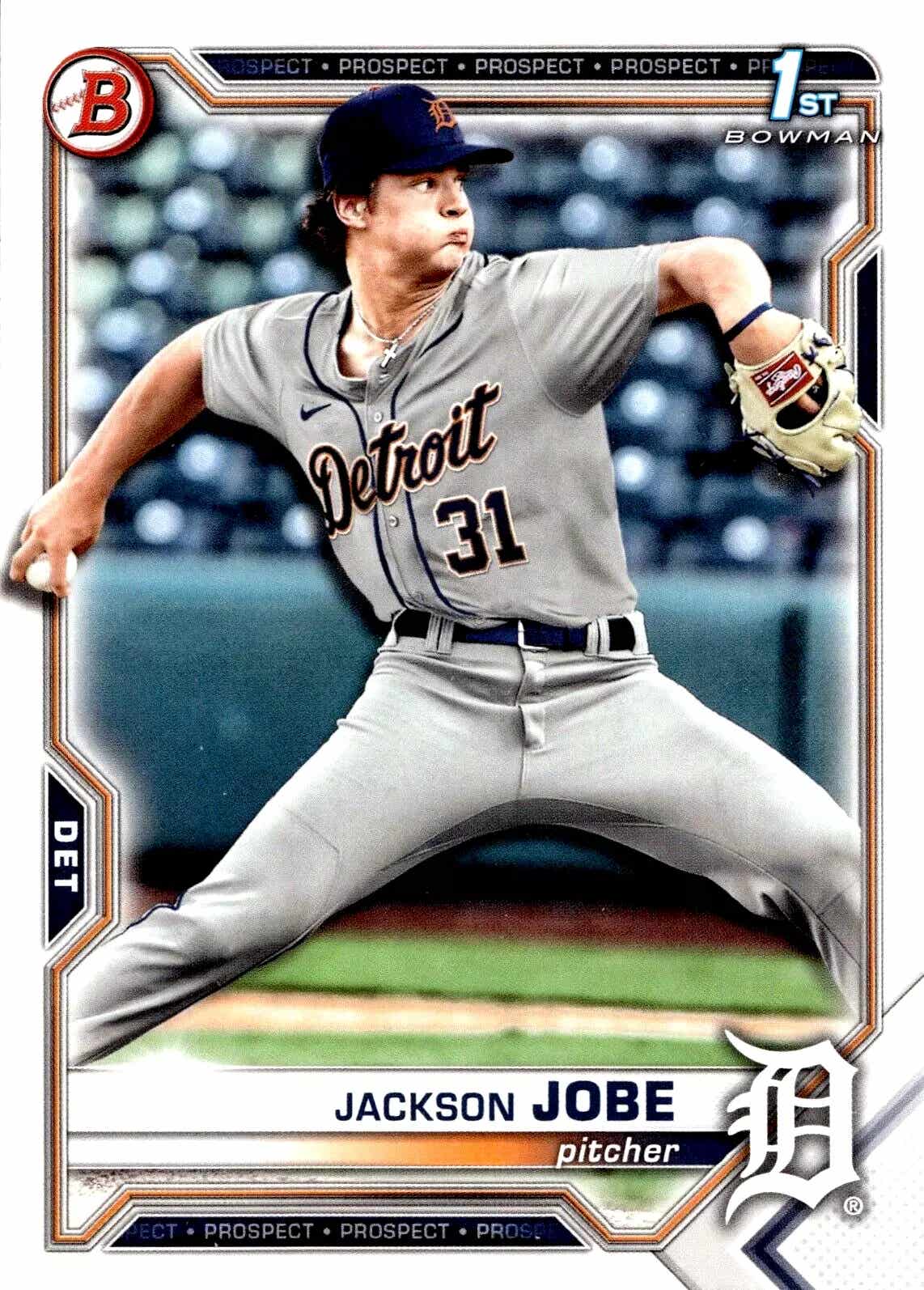
Featured
Hot Dogs and High Dollars: 1954 Wilson Franks:
By Arnold Bailey
From the beginning, baseball and hot dogs have been a natural pairing, as good together as Abbott and Costello, Batman and Robin, Bogey and Bacall.
That’s a big plus for fans at the nation’s ballparks, where hawkers offer continuous supplies of franks in buns with the condiments of your choice.
Turns out, the combo is a big plus for baseball card collectors, too.
That was illustrated once again in a recent Goodwin & Co. auction where a high-grade card of Ted Williams produced in 1954 by Wilson Franks sold for a whopping $11,227.
The Williams card is the heavy hitter in the 20-card Wilson Franks set now so difficult to find on the secondary market – and almost impossible to find in top condition. The Goodwin example was graded SGC 7.
The set’s condition woes were predictable – what else could you expect for slabs of cardboard inserted in packages of hot dogs without any protection like a layer of cello or other barrier? Obviously, you could expect that many of the cards would end up with grease stains and more.
Beyond that, the cards’ centering can often be terrible, thanks in part to the thin white borders surrounding the card front images, which leave little margin for error. And the uni-color backgrounds behind the player images, though attractive, also tend to show even the tiniest printing defects.
So, it’s little wonder that the Williams card offered by Goodwin in SGC Near Mint condition attracted so much attention. The auction description claimed that only three examples of the card have graded higher.
1954 Wilson Franks
The meatpacker-turned-cardmaker’s choice of players for the 20-card set was, at best, unusual. The checklist includes nine players and one manager from each of the two major leagues. That could add up to All-Star teams except that only nine of the 20 were members of either the National or American League All-Star squads in either 1953 or ’54.
One of the most interesting card choices is Indians pitcher Bob Feller. Though one of the greatest ever and certainly headed for the Hall of Fame at the time, Feller no longer was the leader of Cleveland’s pitching staff. In fact, three other Indians pitchers (Bob Lemon, Satchel Paige and Mike Garcia) were named to the 1953 American League All-Star team, while Feller was given a few mid-season days off.
But Feller does join Williams in Wilson’s small group of six eventual Hall of Famers. Also included are Dodgers catcher and 1953 National League MVP Roy Campanella, second-basemen Nellie Fox of the White Sox, Red Schoendienst of the Cardinals and Yankees outfielder Enos Slaughter. More closely associated with the Cardinals, Slaughter had been traded by St. Louis to New York in April 1954, so the Wilson cards had to be produced during or after that baseball season.
The White Sox are represented by the most players – four. They are Fox, manager Paul Richards, first-baseman Ferris Fain and outfielder Johnny Groth. Fain had joined Chicago before the 1953 season, after a long career with the Athletics. Groth broke in with the Tigers and came to the White Sox in early ’54. Both would be elsewhere by 1955.
The checklist also includes three Dodgers (the aforementioned Campanella, plus pitcher Carl Erskine and first baseman Gil Hodges), two Cubs (manager Stan Hack and slugger Hank Sauer), two Cardinals (Schoendienst and third baseman Ray Jablonski) and two Red Sox (Williams and catcher Sammy White).
The Phillies are represented by outfielder Del Ennis, the Redlegs by shortstop Roy McMillan, the Braves by outfielder Andy Pafko, the Tigers by shortstop Harvey Kuenn and the Orioles by Vern Stephens, then a third baseman after a dozen seasons as a star shortstop with the Browns and Red Sox. Transformed from the Browns of St. Louis, the Orioles returned to the major leagues in 1954 for the first time since 1902.
Only three of those players were picked as starters for the official All-Star game in 1953 – Campy, Schoendienst and Slaughter (with the latter one of the game’s stars with two hits and a diving catch in the outfield). Six others – Hodges, White, Fain, Fox, Kuenn and Williams – were also named to the teams, but not in the starting lineups.
Ted was an All-Star selection, although the game was played only a few days after his release from military duty. He had the honor of tossing the ceremonial first pitch, but he didn’t get to play in the game.
In 1954, Campy and Jablonski were National League starters with Erskine, Hodges and Schoendienst on the bench, and Fain, Fox, Kuenn and Williams listed as American League backups.
Players from the four other big league teams were nowhere to be found in Wilson’s frankfurter packages – the Giants (though they won the ’54 NL pennant after a fifth-place finish in ’53), the Pirates (cellar-dwellers in both ’53 and ’54), the Senators (second-division perennials) and the Athletics (the American League’s last-place finishers in ’54 after ending up seventh the previous year).
Over time, collectors have found that – while the set’s Hall of Famers are the highest valued of the Wilson Franks cards – the scarcest seem to be the cards of Jablonski, Groth, Richards and Hack.
Despite their inherent problems with staining and spotting, the cards’ design is appealing, especially the clean and uncluttered fronts. The color images present the players in posed positions, except for the Williams card on which the great hitter is following through on his patented swing and evidently watching the batted ball sail toward the grandstand.
The players’ names and teams are printed in red, while black ink was used for the facsimile signatures. On some of the cards, the autographs are difficult to see because they get lost in dark backgrounds. The card backs have biographical and personal information and brief narratives. The cards are unnumbered.
Typical of the card back information is what’s on the Williams card sold in the Goodwin auction. It lists “Theodore Samuel Williams” as 6’3” tall, weighing 205, batting left but throwing right, and born on Oct. 30, 1918. His career and 1953 batting and fielding stats are listed on two boxed lines, and the narrative reads, “Williams ranks as one of baseball’s all-time greats. Returning from Korean service last year, he hit .407 and had a tremendous slugging average of .901. Four times Ted has led the league in hitting, including .406 in 1941. He holds numerous major league records and twice was ‘Most Valuable Player’ in American League. Ted has lifetime batting average of .348.”
The one distraction on the cards is the package of Wilson frankfurters floating near the head of each of the players, one of the rare instances where a product is so openly hyped. In some cases, the players seem to be looking longingly at the hot dogs; in others, it looks like the package is about to hit them in the head. Wilson is more subtle on the card backs – listing the company’s name (Wilson & Co. Inc.) and “Wilson Certified Franks” across the card bottoms under the player’s 1953 and life statistics.
Wilson was among several meat packing companies that used baseball cards to help sell their products, most of them peddling frankfurters or wieners. Others include Stahl-Meyer, Kahn’s, Swift, Hunter’s Wieners, Henry House Wieners, Esskay Hot Dogs, Rodeo Meats, Jimmy Dean’s (sausages) and Shopsy’s Frankfurters. Another company, Armour, also got into the baseball collectibles market but focused more on coins/medallions. And, of course, the more recent entries have included such fast food chains as Burger King and McDonald’s that are more interested in hamburgers than hot dogs.
Most were regional products or single-team focused like Esskay Orioles cards in 1954 and ’55, minor-league oriented like Henry House Wieners or even dedicated to just a single player like the Elston Howard Sausage cards in 1979. Unlike most of the others, Wilson had the advantage of being distributed nationally.
A handful of the players in the Wilson set also appear on checklists for some of the other meat-product series – Slaughter in the Rodeo Meats and Hunter’s Wieners sets, along with Jablonski and Schoendienst; McMillan in the Kahn’s sets; and Campanella, Hodges and Erskine in the Stahl-Meyer series.
But it is clearly the Wilson Franks cards that cemented the cardboard commemoration of baseball and hot dogs, doing it with cards that nearly 60 years later have become the most sought-after of all the meat-products sets.
Arnold Bailey is a freelance contributor to SCD. He can be reached at acbailey1125@yahoo.com.






